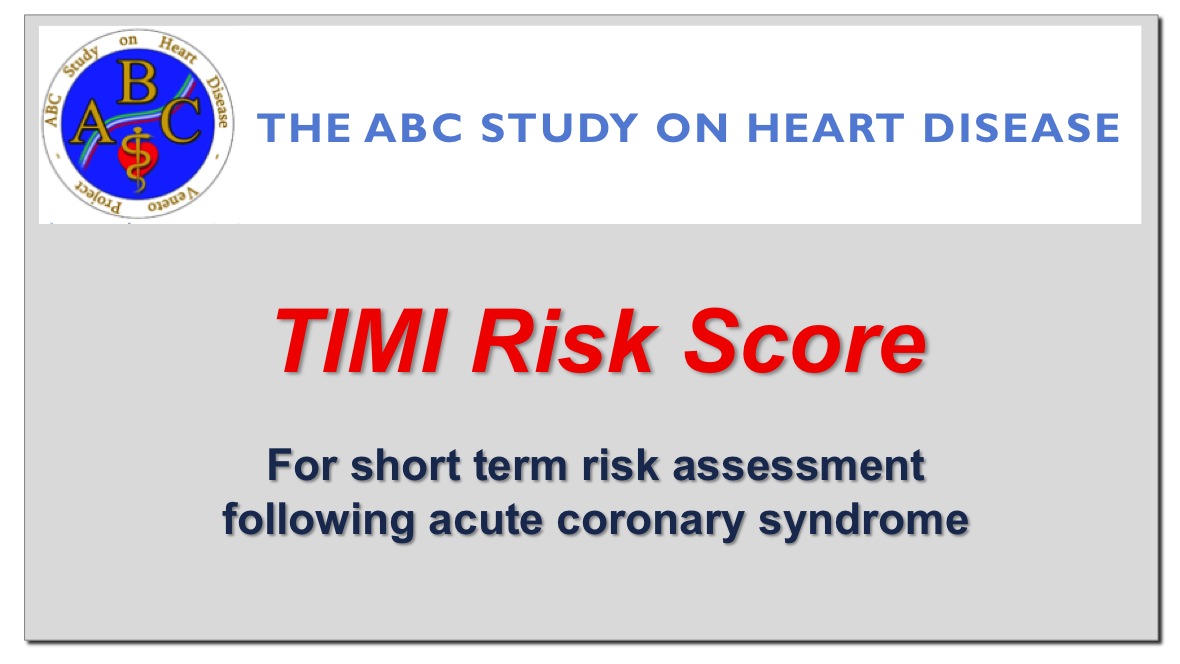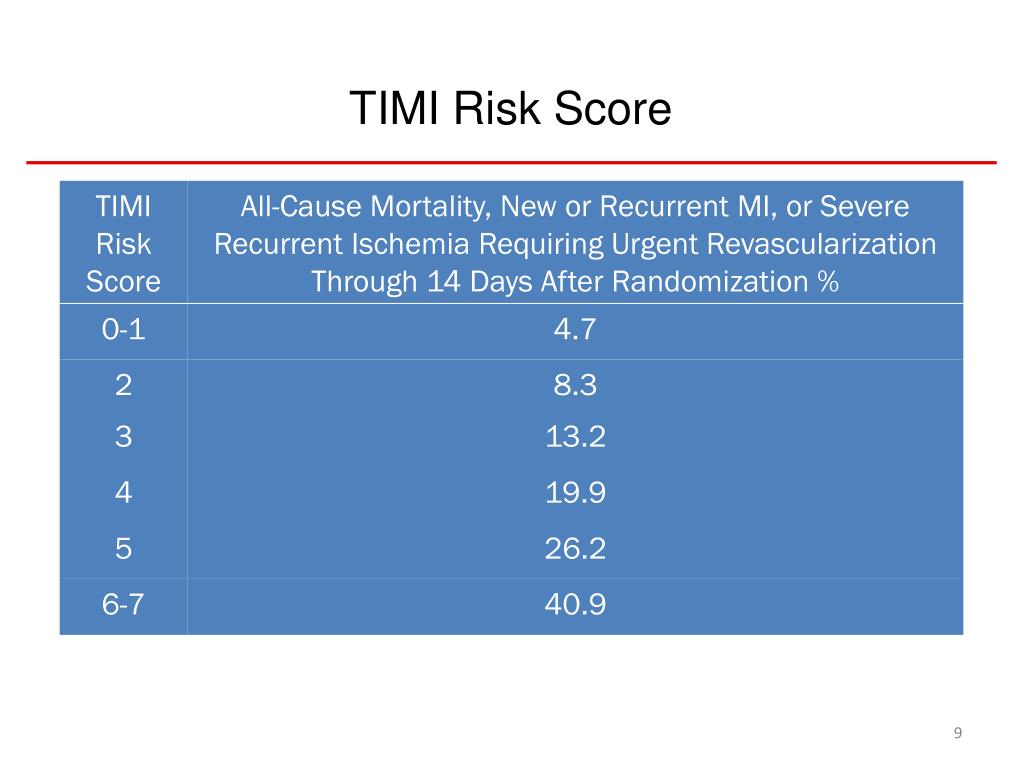
The frequency of complications of anterior wall myocardial infarction at the time of discharge was compared among these groups.

Patients were divided into three groups: low-risk, moderate-risk, and high-risk TIMI groups. The TIMI score was calculated by proforma at the time of admission. A total of 369 patients were selected who had anterior wall myocardial infarction and received thrombolytic therapy, according to the inclusion and exclusion criteria. The study duration was six months, from Septemto March 23, 2017.
Timi risk score calculator series#
Materials and methods An observational case series study was conducted in the Department of Cardiology at Sandeman Provincial Hospital in Quetta, Pakistan. This study was designed to determine the frequency of cardiac complications of anterior wall STEMI assessed on TIMI risk score and to compare the rate of cardiac complications according to the TIMI score. The Thrombolysis in Myocardial Infarction (TIMI) risk score for ST-segment elevation myocardial infarction (STEMI) is based on eight high-risk parameters that can be used at the bedside for risk stratification of patients presenting with STEMI. 2000 284 (7): 835-42.Introduction and objective Effective risk stratification is integral to the management of acute coronary syndromes.

The TIMI risk score for unstable angina/non-ST elevation MI: A method for prognostication and therapeutic decision making. TIMI risk score accurately risk stratifies patients with undifferentiated chest pain presenting to an emergency department. Application of current guidelines to the management of unstable angina and non-ST-elevation myocardial infarction.
Timi risk score calculator trial#
TIMI risk score for ST-elevation myocardial infarction: A convenient, bedside, clinical score for risk assessment at presentation: An intravenous nPA for treatment of infarcting myocardium early II trial substudy. Morrow DA, Antman EM, Charlesworth A et-al.




 0 kommentar(er)
0 kommentar(er)
